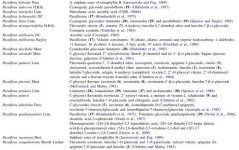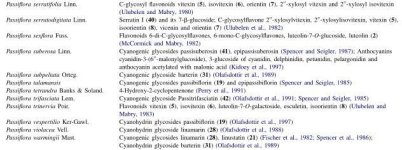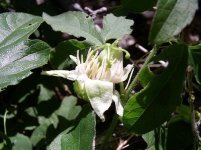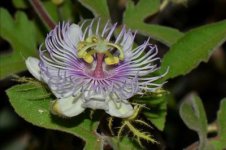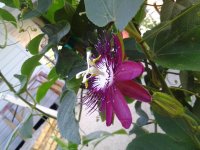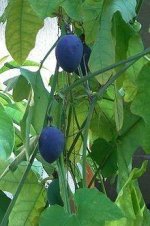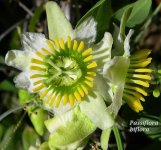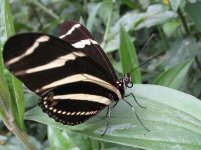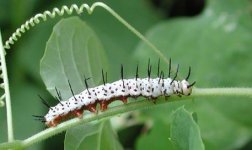..i've attached below the most comprehensive table of passiflora phytochemical constituents (flavonoids, glycosides etc.) that i have found to date, from Passiflora: a review update [Kamaldeep Dhawana, Sanju Dhawanb, Anupam Sharmab; Journal of Ethnopharmacology Volume 94, Issue 1, Sept 2004, Pages 1–23 http://www.mendeley.com/research/passiflora-a-review-update/#page-1]
..it is not complete, however, as it doesn't include Neu's 1954 findings of harman in a number of species (P. actinea, P. alba, P. byronoides, P. capsularis, P. eichleriana, P. quadrangularis, P. suberosa and P. warmingii, see earlier in thread) and leaves detail of incarnata and edulis for the main paper.. this paper outlines the various medicinal actions observed in passionflowers incl. anxiolytic, anti-oxidant and anti-inflammatory..
such a fertile genus..
.
EDIT ps. a reminder that cyanogenic glycosides, while potentially toxic, are broken down/destroyed by prolonged heating /boiling or drying of plant material..BTW not all glycosides are toxic, some are potentially therapeutic..
..it is not complete, however, as it doesn't include Neu's 1954 findings of harman in a number of species (P. actinea, P. alba, P. byronoides, P. capsularis, P. eichleriana, P. quadrangularis, P. suberosa and P. warmingii, see earlier in thread) and leaves detail of incarnata and edulis for the main paper.. this paper outlines the various medicinal actions observed in passionflowers incl. anxiolytic, anti-oxidant and anti-inflammatory..
such a fertile genus..
.
EDIT ps. a reminder that cyanogenic glycosides, while potentially toxic, are broken down/destroyed by prolonged heating /boiling or drying of plant material..BTW not all glycosides are toxic, some are potentially therapeutic..


